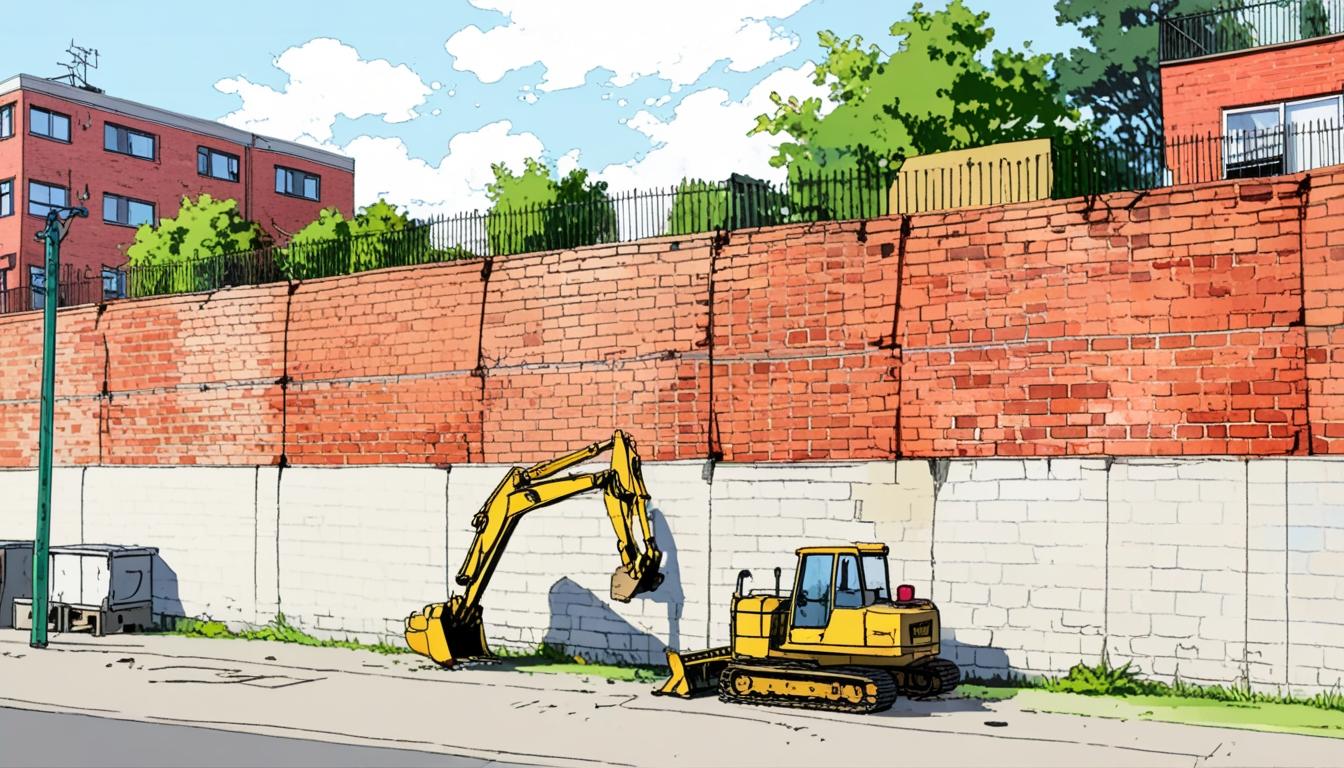A significant legal dispute has emerged between the developers of a new housing estate and a local businessman regarding the ownership of a low wall, referred to as a 'dwarf wall', in Hempsted, Gloucester. Lioncourt Homes is asserting the need to demolish the wall, which stands just two bricks high, to facilitate the establishment of an emergency access route, a requirement that arises from their planning permission.
Roger White, the 58-year-old IT worker and local businessman who claims ownership of the wall, alleges that it is located on land that he inherited from his father, Ernie White, who passed away in 1997. In a statement concerning the wall's ownership, Mr White noted, "My father always said to me 'keep an eye on it'... I went online and I found the actual planning permission itself which stated that because of potential flooding in the lane entrance, planning authorities required that there would be an emergency access put in for emergency vehicles."
Mr White expressed concern about being "bullied" by Lioncourt Homes, which he claims did not engage in negotiations to purchase the wall prior to commencing construction work on the adjacent development of 70 homes. He revealed that following his contact with the developers, they acknowledged in writing that the wall indeed belongs to him. However, the developers have argued that the wall is either a part of the adopted highway or their property, a claim Mr White contests.
In an attempt to substantiate its ownership, Lioncourt claims to have documentation from 1964 that supports their position, while Mr White cites paperwork from 1971 that he argues proves his ownership of the wall. He has sought legal counsel to assist him in this matter.
The situation intensified when Lioncourt Homes issued a cease-and-desist letter to Mr White, stating that he had "no entitlement to a ransom" over the wall. Mr White's solicitors have countered that it is Lioncourt's responsibility to demonstrate that the wall falls within its property boundaries and to clarify whether it is part of the public road.
Mr White articulated his surprise at the developments, stating, "I don't understand how we can get to the point of 70 houses being built and nobody has actually looked into this before." He stressed that while he is not opposed to the development project, he believes it is essential that the developers adhere to legal protocols. He remarked, "They just want to get on with it, bulldoze my wall and ignore my rights."
In response to Mr White's concerns, a representative of Lioncourt Homes declared, "Works required to implement our planning permission is in land wholly owned by Lioncourt Homes or is in adopted highway land, no third-party land is required."
Further complicating the issue, a spokesperson for Gloucestershire County Council commented on the legal standing of the land in question, stating, "We consider that the legal boundary of Lioncourt's land directly adjoins the public road of Honeythorn Close. Legal boundaries have no physical width... and the highway status takes precedence over whoever owns the ground beneath it."
As this dispute unfolds, both parties appear determined to assert their respective claims regarding the ownership of the wall, highlighting the complexities often present in property disputes, particularly when development projects are involved.
Source: Noah Wire Services
